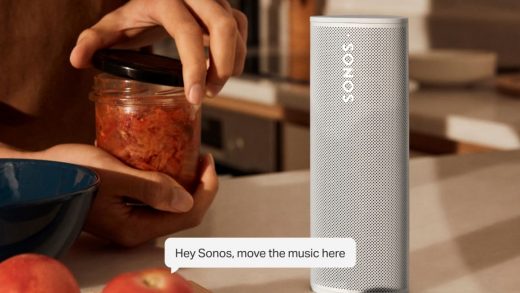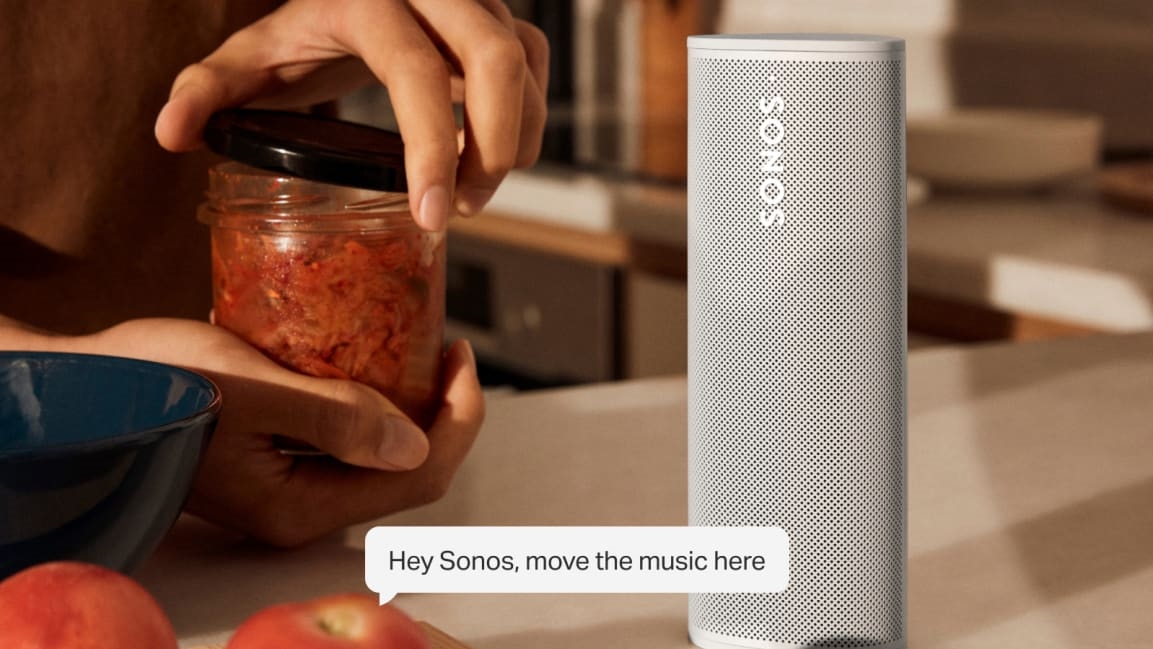How Sonos’ new voice assistant could take on Alexa and Google Assistant
The already-crowded world of voice assistants is getting some new competition, with Sonos announcing today it will launch its own voice assistant on June 1.
While a number of Sonos speakers already support Alexa and Google Assistant, the company’s new voice assistant will focus on audio playback. “Hey Sonos” voice commands will work with Apple Music, Amazon Music, Deezer, Pandora, and Sonos Radio to start, with more audio services to come in the future. In a twist, the initial voice will come from Giancarlo Esposito, the sonorous-voiced actor best known for his role as Gustavo Fring in Breaking Bad and Better Call Saul.
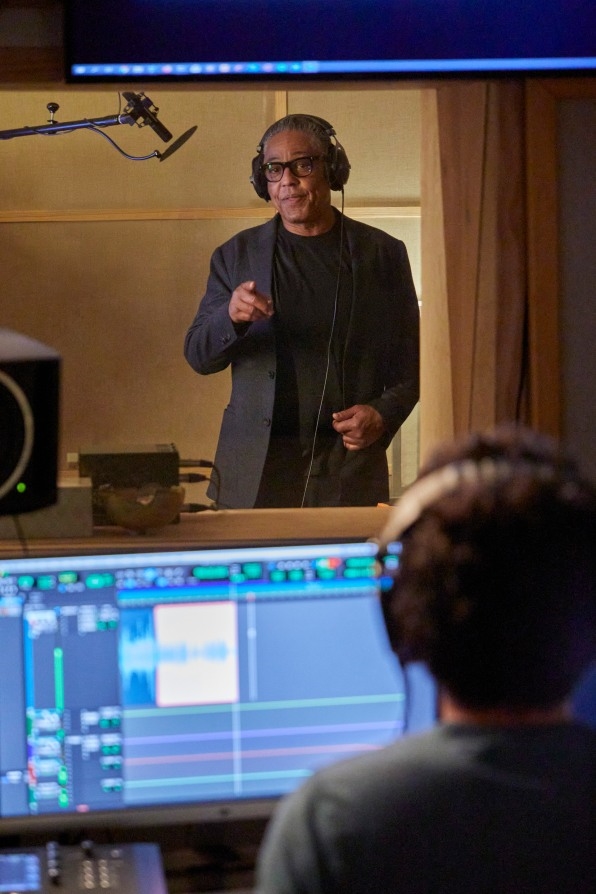
[Photo: courtesy of Sonos]
Sonos is also announcing a $279 soundbar called the Sonos Ray—albeit without Sonos Voice Control built in—and is releasing new colors for its portable Sonos Roam speaker, including “Olive,” “Wave,” and “Sunset.”
Launching a new voice assistant may seem confounding given the popularity of existing options, but Sonos argues that a more focused voice assistant is better for privacy and responsiveness. Sonos will process all voice commands on-device, meaning no recordings or transcripts ever leave the speaker itself. (Alexa, Google Assistant, and Siri, by comparison, all process voice commands online, and they can store recordings of your commands if you let them.) By having its own assistant, Sonos can also enable new features, such as transferring audio between speakers with just a voice command.
“Music continues to be in many ways the killer app for voice,” says Ted Dworkin, Sonos’ senior vice president of product management and customer experience. “So who better to come forward with a purpose-built voice assistant that can appeal to our audience as we grow?”
The case against generalists
Sonos may be onto something with its narrower approach. While Amazon and Google once pitched voice control as the next big thing in personal computing, their smart speakers are mostly popular for music playback and simple queries, such as the weather forecast or a piece of trivia. A survey by VoiceBot found that 39.8% of people use smart speakers for music every day, versus just 4.9% for shopping, 5.4% for recipes, and 6.7% for text messages.
VoiceBot has also found that smart speaker adoption is stalling out. After years of double-digit growth in the percentage of U.S. adults who own smart speakers, that percentage has only increased 2.2% over the past two years, now sitting at 36.6%. Last December, Bloomberg’s Priya Anand also reported that Alexa device growth has slowed down, and that adding new features hasn’t increased engagement, citing internal planning documents.
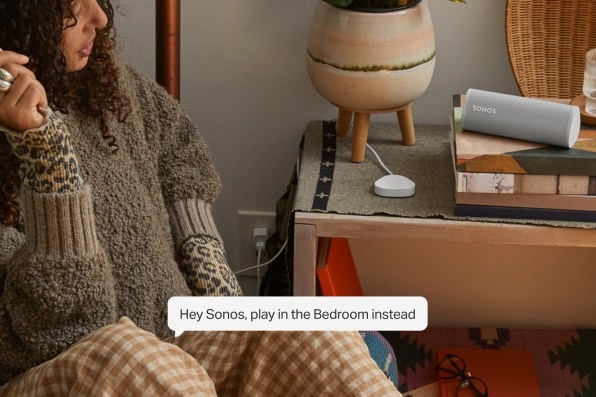
All of which suggests that there’s room for voice assistants that are less ambitious and more focused on a specific task. Rebecca Zavin, Sonos’s senior vice president of software, notes that because its assistant isn’t handling general queries, it can more easily handle voice commands on the speaker itself. (The assistant’s launch was likely fueled by Sonos’ 2019 acquisition of Snips, a firm that offered local voice control for privacy reasons.)
“No audio content ever leaves your speakers,” she says. “No transcripts of your audio ever leave your speakers. No one will ever listen to them or read them, they’re entirely inside the speaker system. And it’s possible because we’re building it custom for music.”
Sonos also argues that the on-device nature of its assistant makes voice commands snappier. While the company declined to provide specific comparisons with other speakers, assistants such as Alexa and Google Assistant certainly have room to improve on responsive times; even simple commands such as “turn the volume up” can take a few seconds.
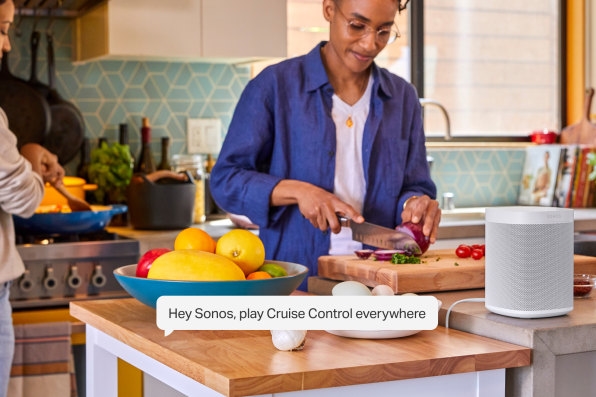
“The ability to command it, to be able to play in certain locations and only those locations, to make it quieter and louder in certain locations, to be able to do follow-on queries—all of that will be more accurate and more performant than you’ll find in general-purpose assistants,” Dworkin says.
That said, Sonos will still support Alexa or Google Assistant on Sonos Beam, Arc, and One speakers. Users will even be able to alternate between “Hey Sonos” and “Alexa” voice commands just by using different wake words. (Sonos has accused Google of blocking the ability to run voice assistants concurrently, so users must activate Google Assistant in the Sonos app while disabling all other assistants.)
“We love our other voice partners, they serve a purpose in our ecosystem and for our customers, and we continue to support them,” Dworkin says.
Reclaiming the ecosystem
Sonos Voice may also exist, on some level, to boost the multi-room audio capabilities on which Sonos built its brand.
Synchronizing music across multiple speakers has become a table-stakes feature for Amazon Alexa speakers, Google Assistant and Chromecast devices, and Apple’s HomePods and AirPlay 2 protocol. Multi-room audio is even easier on those devices than with Sonos speakers, because you can launch music across several speakers with just a voice command, use the AirPlay controls built into iOS, or use the Chromecast controls built into most popular music apps.
By comparison, playing music across multiple Sonos speakers requires a trip to the Sonos app, or using Sonos’ AirPlay support instead. While the Sonos Beam, Arc, and One support Alexa and Google Assistant voice commands, they don’t tie into those assistants’ multi-room features.
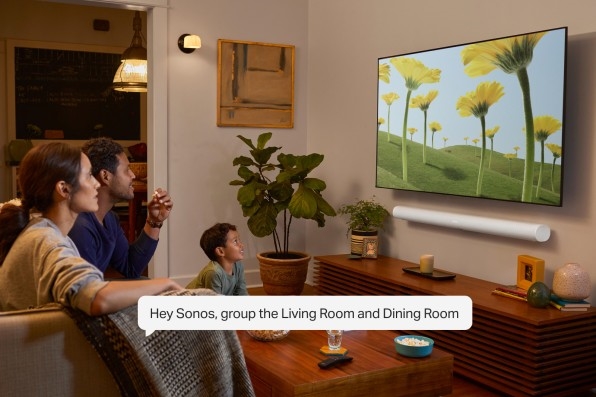
With voice control, playing music across multiple Sonos speakers may once again feel like a first-rate experience, and it’s arriving as Sonos’ ecosystem is picking up momentum. At the end of 2021, the company had speakers in 12.6 million households—up from 10.9 million the year before—and each of those homes have three Sonos speakers on average. Listening hours were also up 19% year over year.
If Sonos’s voice assistant works as advertised, it could deliver the kind of ecosystem stickiness that larger voice assistants are still grasping for. And it’ll happen because Sonos is sticking to audio instead of trying to do everything.
“We really want to focus on music,” Zavin says.”It’s what we love, it’s our ethos, and we think that’s why it’s valuable.”
(37)

